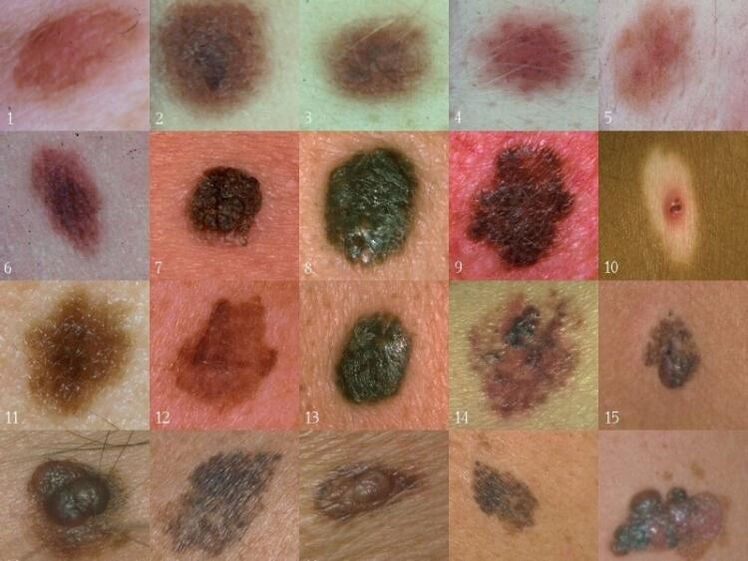
Some types of human papillomavirus, which penetrate damaged areas of the skin, cause rapid cell growth in the top layer. This results in warts. Wart types can vary. They form anywhere on the skin and can vary greatly in size and color. Warts usually do not cause major problems, they go away on their own. Nevertheless, in some cases it is worth consulting your doctor and removing them.
Warts on the body are usually distinguished by their location.
Wart species
- Vulgar (common)
- Soles,
- Apartment (youthful),
- Genital warts (genital warts)
- Filiformis,
- Elderly (seborrheic keratomas).
Common warts
Vulgar or common is the most common type of these tumors. These are small nodules (up to 10 mm) with a rough surface. They protrude very slightly above the surface of the skin and are completely painless. Common warts form anywhere on the body, but are usually on the neck, head, elbows, or knees.
Another feature of common warts is the appearance near the "main", large, smaller.
Soles
It is one of the common varieties of warts, also known as the "spitz". It is located on the skin of the foot, usually on the side of the sole. grow in the skin. Then they look like a pit surrounded by a roller with protruding papillae. Foot warts often cause discomfort to a person as they cause discomfort and even pain while walking.
Tight or uncomfortable shoes can provoke their formation. In such shoes, areas of the skin are damaged and become more vulnerable to the penetration and development of the human papillomavirus.
Apartment
Flat warts are more common at an early age, in children and adolescents, and are therefore called juvenile. These are small derivatives (usually about 3 mm). They can be round or irregular. The surface of juvenile warts is smooth and flat. The color is usually the same as the skin, sometimes flat warts can have a yellowish tinge. These types of warts can form anywhere on the skin, but their "favorite" areas are the face and hands.
Flat warts usually do not cause physical discomfort and disappear over time. However, being placed in prominent places causes aesthetic discomfort, so patients often turn to doctors and beauticians for removal.
Genital warts
Such warts are localized in the genital area and the infection occurs during sexual intercourse. Genital warts most commonly spread to the groin, penis, labia, and anus. Warts of this type can also form in the mouth.
Genital warts are small growths of skin with a sharp tip and small papules. These papillas merge with each other and often look like cauliflower. The color of the genital warts is dark body color, pink.
Treatment for genital warts is performed by dermatovenerologists in the presence of a gynecologist or urologist.
Filamentous
Filamentous warts (acrochords) are more common in the elderly. It is an elongated growth reminiscent of a thread. Suture warts can be up to 1 cm in size. Acrochord localization - neck and face skin. They usually form on the eyelids and lips. There are suture warts in the armpits.
Acrocords are often injured due to their elongated shape. They do not usually go away on their own, and there are often relapses after removal when new warts form in the same areas.
Elderly
Seborrheic keratomas usually develop in old age due to skin lesions. They are anywhere on the body, but more often on the neck, on the hands, on the chest. These are small flat papules with clear boundaries. Elderly warts are more often yellowish-pink or brown, their size up to 2 cm Can be single, can form entire foci. Dead skin cells are the basis of such neoplasms. At first they are soft but become dense over time, covered with cracks.
Elderly warts require careful attention because they are prone to malignant transformations.
Thus, there are different types of warts. Most of them are harmless, but it is better to see a doctor immediately to make sure.
















































































